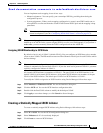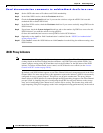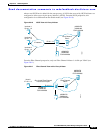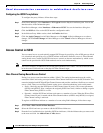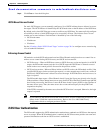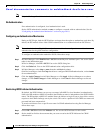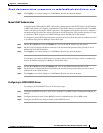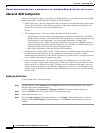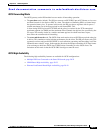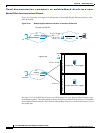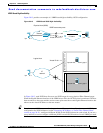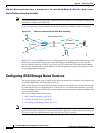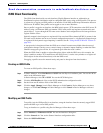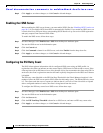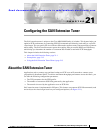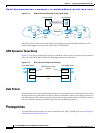
Send documentation comments to mdsfeedback-doc@cisco.com.
20-21
Cisco MDS 9000 Family Fabric Manager Configuration Guide
OL-6965-03, Cisco MDS SAN-OS Release 2.x
Chapter 20 iSCSI Configuration
Configuring iSCSI
iSCSI Forwarding Mode
The iSCSI gateway on the IPS module has two modes of forwarding operation:
• The pass-thru mode (default): The IPS port converts an iSCSI PDU into an FCP frame or vice versa
and then forwards it one frame or PDU at a time. The absence of buffering PDUs or frames keeps
the operation latency low. To operate in this mode, the IPS port has to negotiate with its peers a
suitable maximum size of the data payload in each frame/PDU. This
is done during iSCSI login and FC PLOGI and the value is restricted by the TCP connection's
maximum segment size (MSS) and the maximum Fibre Channel data payload size specified by the
FC target. This usually results in a smaller maximum payload size than most hosts expect,
thus comes the second mode of forwarding.
• The store-and-forward mode: The iSCSI client sends and receives an iSCSI data payload at the size
it desires. This sometimes results in better performance for the client. The IPS port stores each TCP
segment it receives until one full iSCSI PDU is received before converting and forwarding it as Fibre
Channel frames to the FC target. In the opposite direction, the IPS port assembles all FC data frames
of an exchange to build one iSCSI data-in PDU before forwarding it to the iSCSI client. The
limitation on this mode is that the iSCSI CRC data digest cannot be used.
iSCSI High Availability
The following high availability features are available for iSCSI configurations:
• Multiple IPS Ports Connected to the Same IP Network, page 20-22
• VRRP-Based High Availability, page 20-23
• Ethernet PortChannel-Based High Availability, page 20-24



